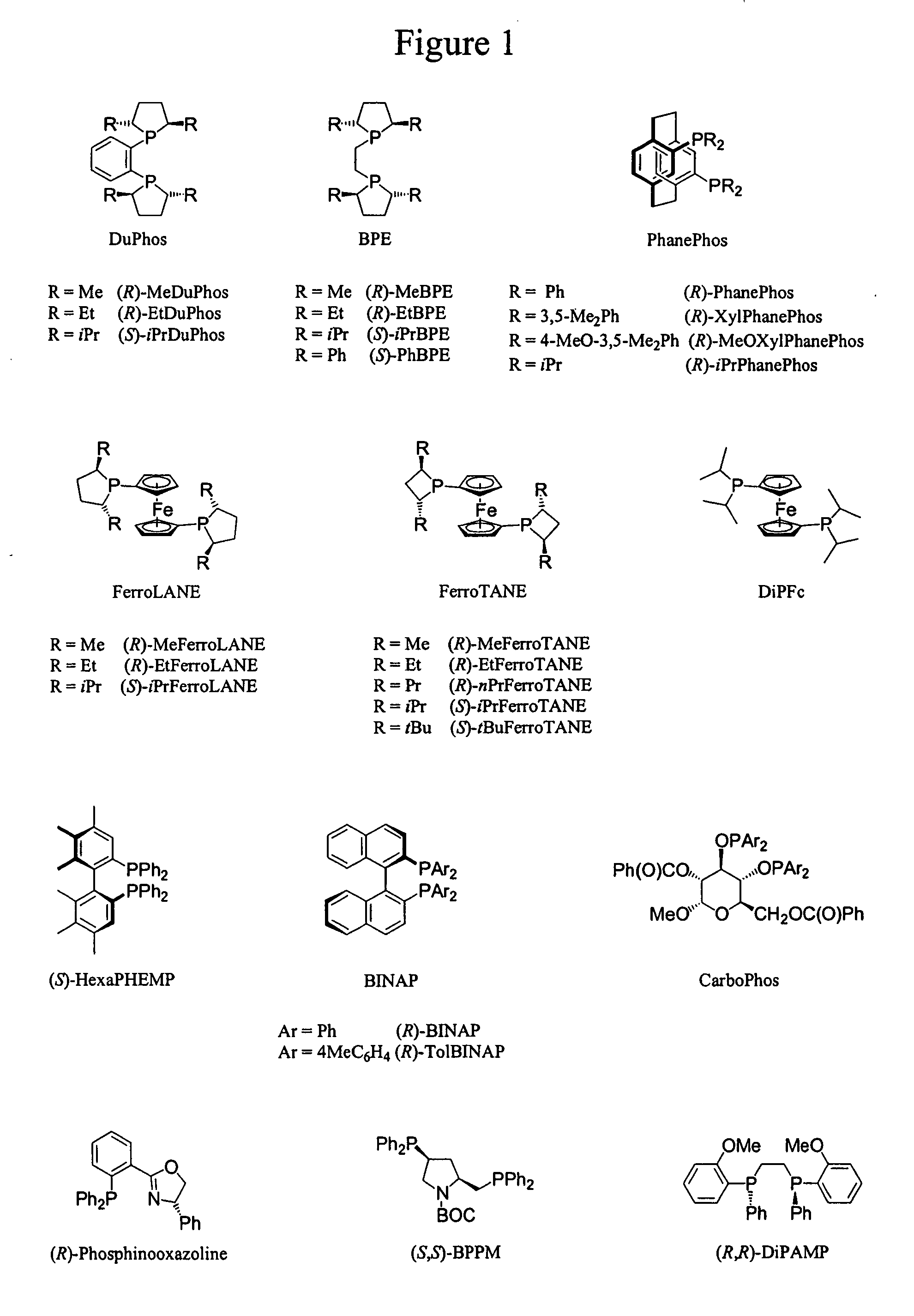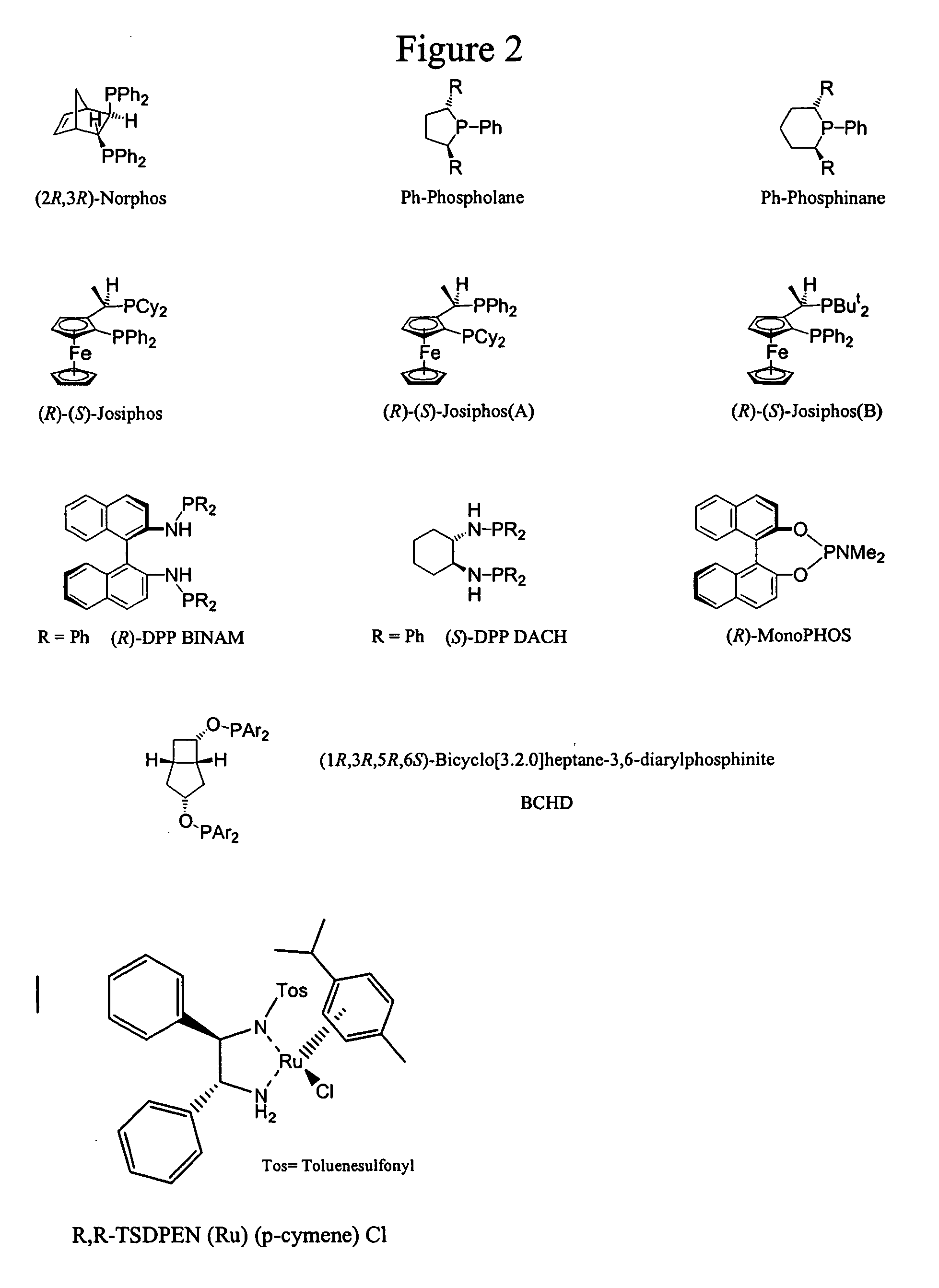Process for the synthesis of enantiomeric indanylamine derivatives
a technology of indanylamine and derivatives, which is applied in the preparation of carbamic acid derivatives, organic chemistry, and preparation of amino compounds, etc., can solve the problems of low yield of starting materials such as 3-amino-indan-5-ol and 6-methoxy-indan-1-ylamine, and the prior art does not disclose sufficiently efficient methods of enantiomeric purification. , to achieve the effect of reducing yield
- Summary
- Abstract
- Description
- Claims
- Application Information
AI Technical Summary
Benefits of technology
Problems solved by technology
Method used
Image
Examples
example 1
Dimethyl-carbamic acid 3-oxo-indan-5-yl ester
[0046]
[0047] Dimethyl carbamyl chloride (7.7 mL, 83.3 mmol) was added dropwise to a stirred suspension of 6-hydroxy-1-indanone (10.290 g, 69.4 mmol) and potassium carbonate (12.48 g, 90.3 mmol) in DMF (50 mL) at 0° C. (external) over a period of 30 minutes. One hour after the addition was complete the cold bath was removed and the reaction was allowed to warm slowly to room temperature over 2 hours. The reaction mixture was diluted with methyl tert-butyl ether (50 mL) and water (100 mL) and the resultant solid was collected by filtration and washed with water (50 mL) and then methyl tert-butyl ether (50 mL). The collected material was dried under vacuum overnight. The crude product was purified by solvent slurry in methyl tert-butyl ether (50 mL) before being collected by filtration, washed with additional methyl tert-butyl ether (20 mL) and dried to afford the title compound (16) (14.877 g, 98%). 1H NMR (400 MHz, CDCl3) δ ppm 7.47-7.45 ...
example 2a
[0049] Formic acid (4.3 mL, 114.0 mmol) was added dropwise to a stirred solution of dimethyl-carbamic acid 3-oxo-indan-5-yl ester (5.00 g, 22.8 mmol), (R,R)-TsDPEN Ru (p-cymene)Cl (58 mg, 0.1 mmol) and triethylamine (15.9 mL, 114.0 mmol) in dichloromethane (21 mL) at 35° C. (external) over a period of 50 minutes. After 20 hours, additional (R,R)-TsDPEN Ru (p-cymene)Cl (58 mg, 0.1 mmol) formic acid (0.9 mL, 22.8 mmol) and triethylamine (3.2 mL, 22.8 mmol) were added to the reaction and heating was continued for 19 hours. The reaction was allowed to cool before being poured into saturated aqueous sodium hydrogen carbonate solution (150 mL) and was extracted with dichloromethane (150 mL+100 mL). The organic material was dried (MgSO4), filtered and concentrated under reduced pressure to afford the R-enantiomer of the title compound (5.144 g, quant.). Analysis of this material by chiral LC indicated it to be 98% e.e.
PUM
| Property | Measurement | Unit |
|---|---|---|
| temperature | aaaaa | aaaaa |
| pressure | aaaaa | aaaaa |
| pressure | aaaaa | aaaaa |
Abstract
Description
Claims
Application Information
 Login to View More
Login to View More - R&D
- Intellectual Property
- Life Sciences
- Materials
- Tech Scout
- Unparalleled Data Quality
- Higher Quality Content
- 60% Fewer Hallucinations
Browse by: Latest US Patents, China's latest patents, Technical Efficacy Thesaurus, Application Domain, Technology Topic, Popular Technical Reports.
© 2025 PatSnap. All rights reserved.Legal|Privacy policy|Modern Slavery Act Transparency Statement|Sitemap|About US| Contact US: help@patsnap.com



